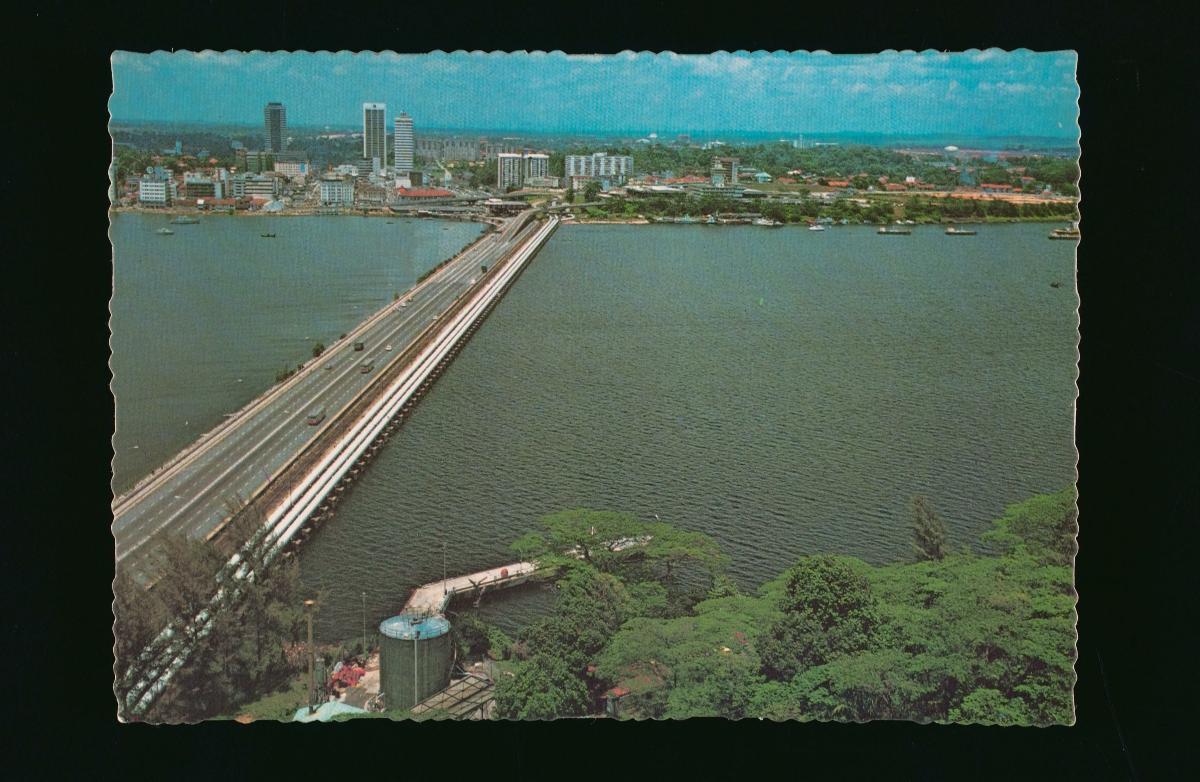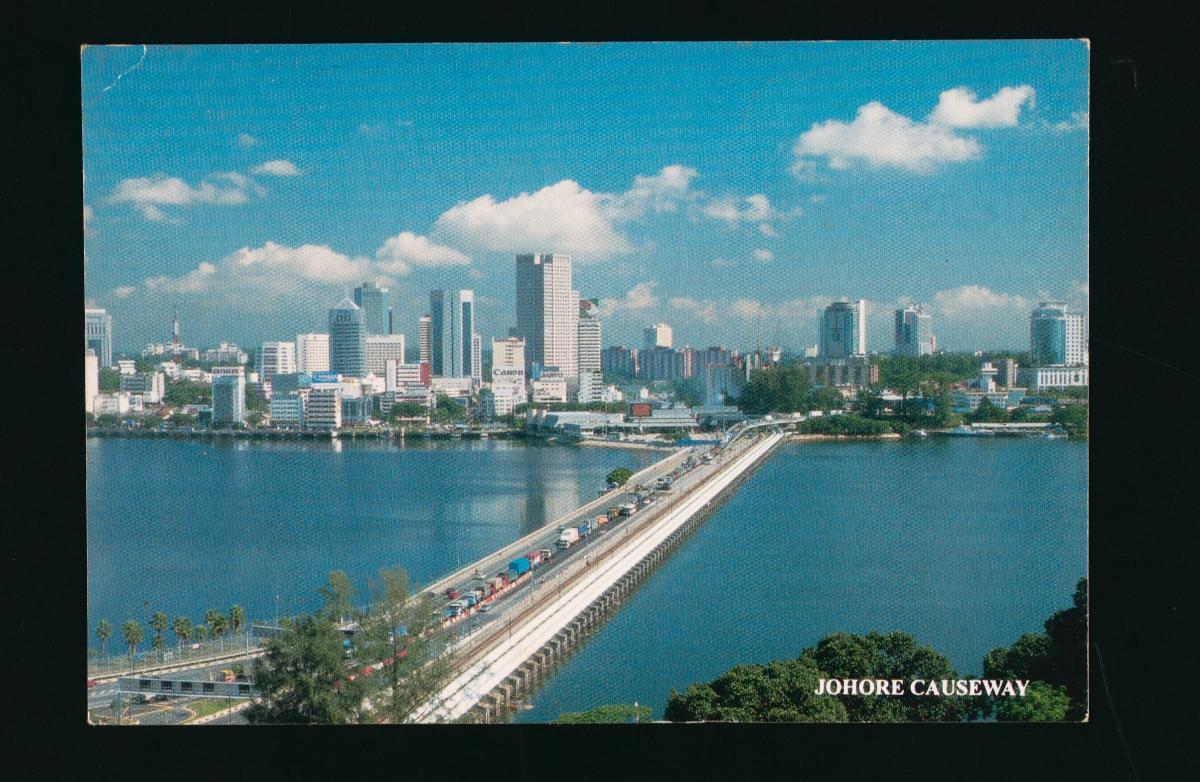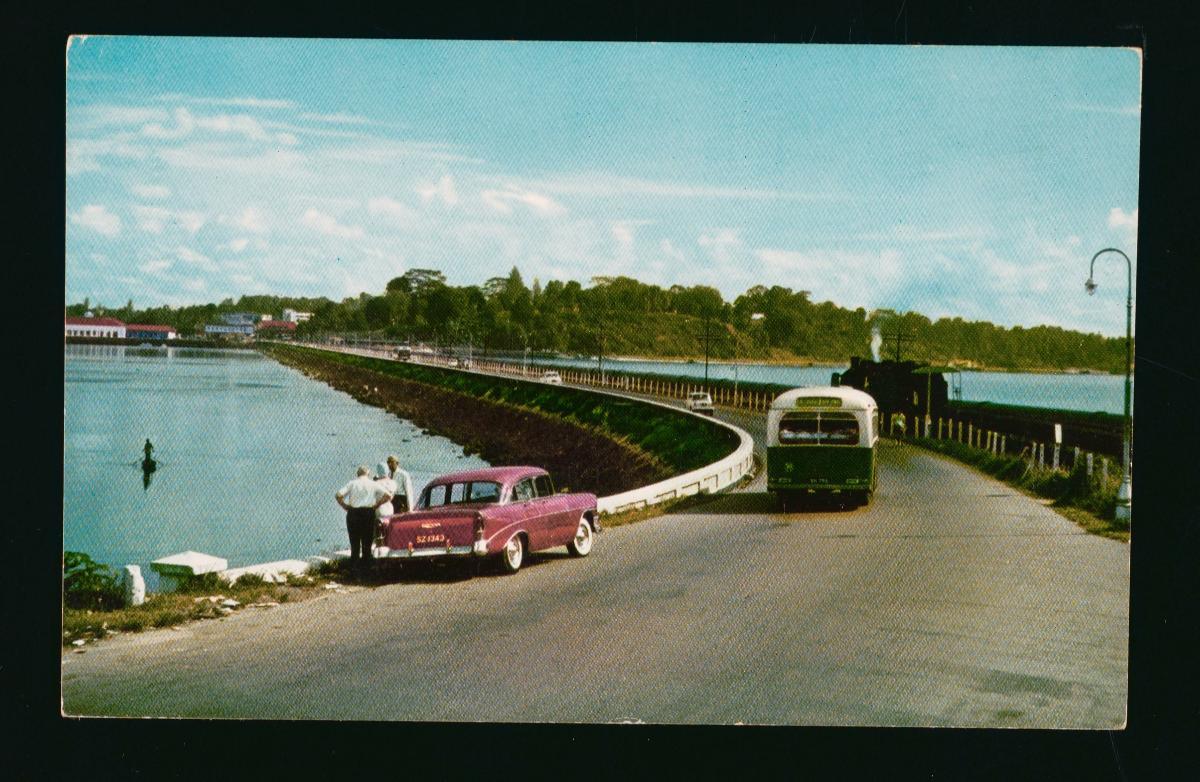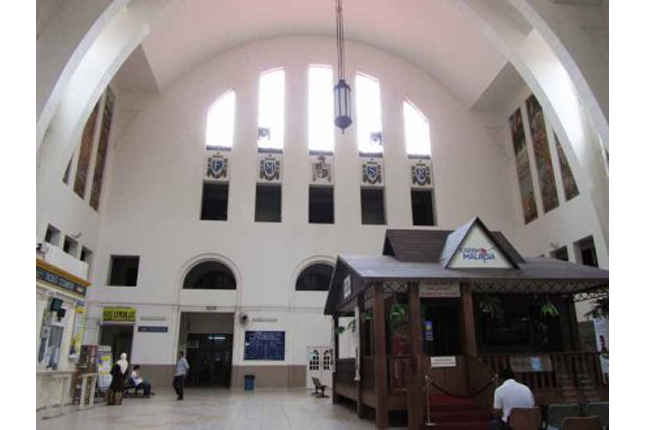The Johor-Singapore Causeway straddles the Straits of Johor between Johor Bahru city in the southern Malaysian state of Johor and the Woodlands district in northern Singapore. The idea for a land link between Singapore and what was then Malaya was mooted as early as 1898 in the Legislative Council and was strongly supported by Sir Frank Swettenham, Governor of the Straits Settlements (1901-1904). However, construction of the causeway only began in 1919 and was finally completed in 1923 at a cost of $17 million. The 1,056-metre-long causeway, which had a two-track railway line, was opened first to goods trains in September 1923 and subsequently to passenger trains a month later. It was officially opened in June 1924 by Sir Laurence Guillemard, Governor of the Straits Settlements (1920-1927). The ferry service continued to be relied upon to transport people and vehicles across the straits until the causeway was later expanded to accommodate pedestrian and vehicular traffic. In 1932, pipelines were added to the causeway to enable water to be transported between Johor and Singapore. Part of the causeway was blown up by retreating British forces in January 1942 to stall the Japanese advancement into Singapore. The causeway continues to serve as both a functional and symbolic link between Malaysia and Singapore.















